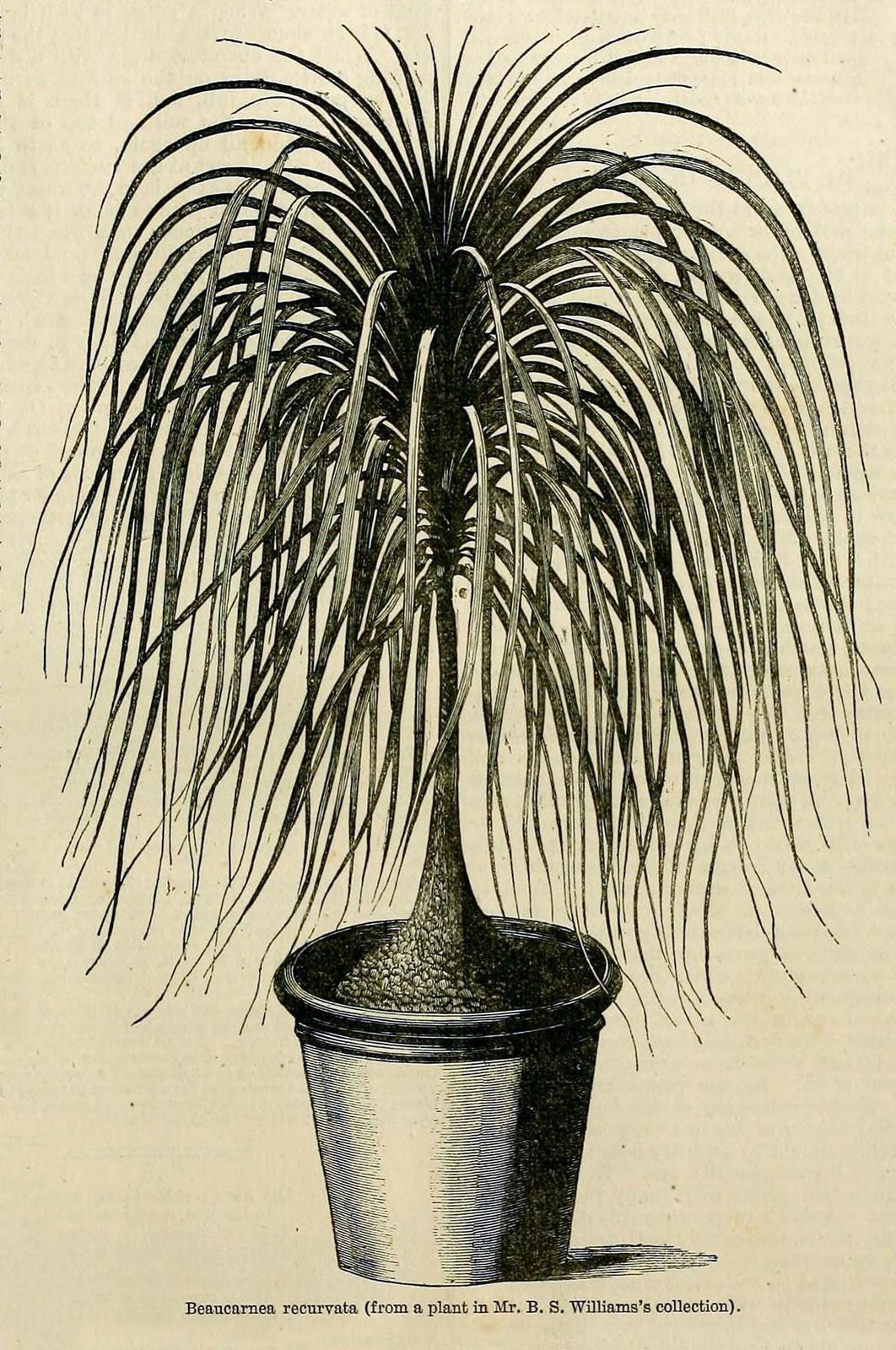Beaucarnea recurvata Lem.
AsparagaceaeLa pata de elefante es una planta muy resistente a la sequía originaria de zonas áridas del sur de Estados Unidos y sobre todo del sudeste de México. Su introducción en Europa se debe al botánico belga Henri Guillaume Galeotti (1814-1858), un amante de los cactus que viajó frecuentemente a México para recoger semillas y plantas para el Jardín Botánico de Bruselas. Fue sin embargo otro amante de las cactáceas, el francés Lemaire, quien describió por primera vez a la beaucarnea hacia 1860. El nombre le viene de otro belga, Beaucarne, un apasionado de las plantas que fue el primero en recolectar flores de esta peculiar especie. La entrada de la pata de elefante en Europa parece deberse a ciudadanos de habla francesa del siglo XIX. París de hecho acogió a lo largo de dicho siglo diferentes exposiciones universales que marcaban la moda dentro de la clase alta europea, también en jardinería. Los duques de Montpensier, emparentados con las casas reales tanto de Francia como de España, vivieron durante varios años del XIX entre París y Sevilla, por lo que trajeron a la capital andaluza las novedades que vieron en París. Se instalaron muchas veces en el Real Alcázar, con su pequeña corte que, a imitación de las grandes cortes al gusto francés, gustaba de los jardines. Con los duques vinieron de Francia jardineros como Lecolant que ayudaron a introducir en la ciudad dicho gusto francés en sus parques y jardines. Las propuestas de Lecolant fueron en gran parte recogidas por otro jardinero francés que fue conservador de parques en Paris, Jean Claude Forestier, principal responsable del diseño de uno de los espacios verdes más característicos hoy de Sevilla, el Parque de María Luisa, nacido de la donación de parte de su terrenos privados que hicieron los mismos duques a la ciudad.
Procedencia
AmericanoCalendario
Hábitat
Morfología
 Palmera
Palmera
 Abanico
Abanico
 Simple
Simple
 Filiforme
Filiforme
 Otras disposiciones
Otras disposiciones
 Entero
Entero
 Acuminado
Acuminado
 Perenne
Perenne
